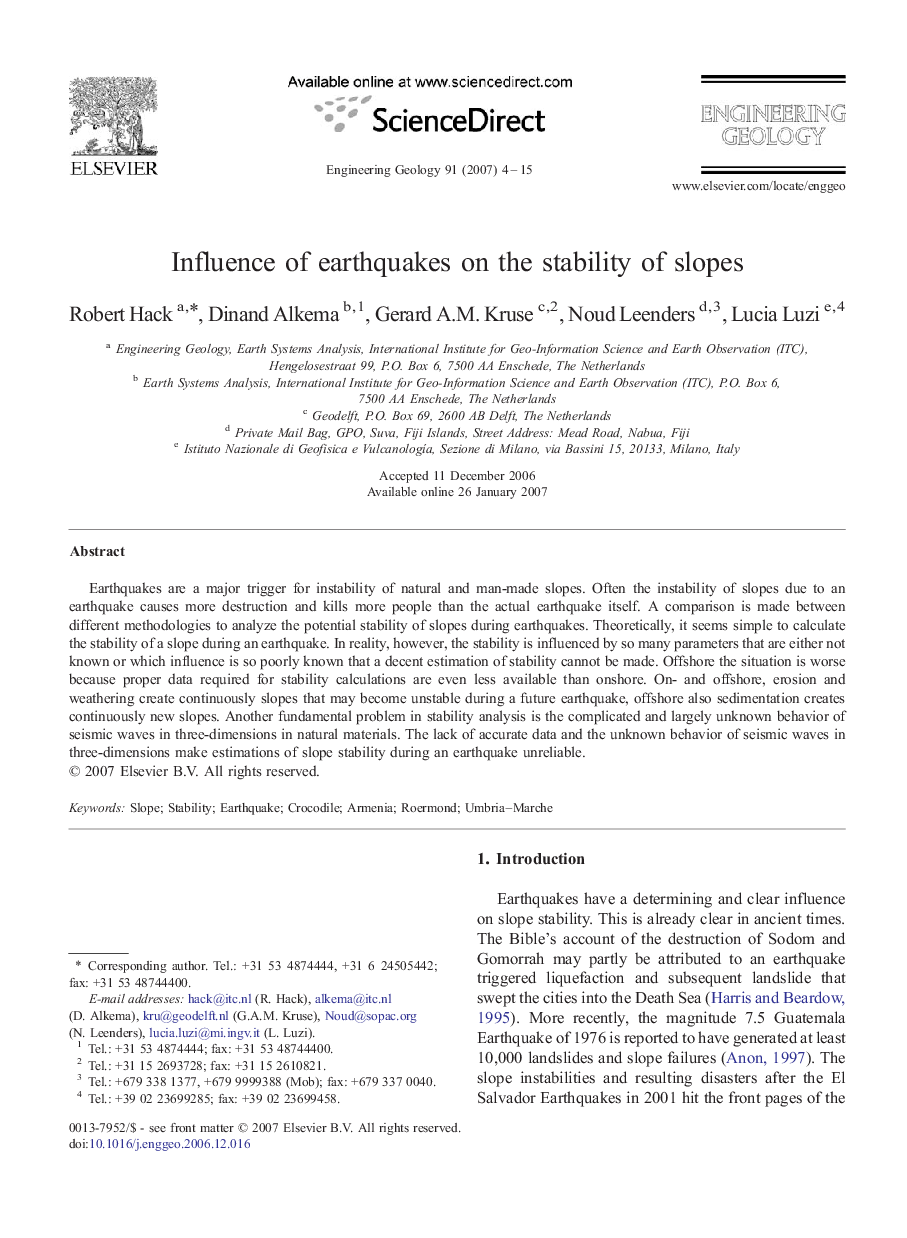| Article ID | Journal | Published Year | Pages | File Type |
|---|---|---|---|---|
| 4744677 | Engineering Geology | 2007 | 12 Pages |
Earthquakes are a major trigger for instability of natural and man-made slopes. Often the instability of slopes due to an earthquake causes more destruction and kills more people than the actual earthquake itself. A comparison is made between different methodologies to analyze the potential stability of slopes during earthquakes. Theoretically, it seems simple to calculate the stability of a slope during an earthquake. In reality, however, the stability is influenced by so many parameters that are either not known or which influence is so poorly known that a decent estimation of stability cannot be made. Offshore the situation is worse because proper data required for stability calculations are even less available than onshore. On- and offshore, erosion and weathering create continuously slopes that may become unstable during a future earthquake, offshore also sedimentation creates continuously new slopes. Another fundamental problem in stability analysis is the complicated and largely unknown behavior of seismic waves in three-dimensions in natural materials. The lack of accurate data and the unknown behavior of seismic waves in three-dimensions make estimations of slope stability during an earthquake unreliable.
